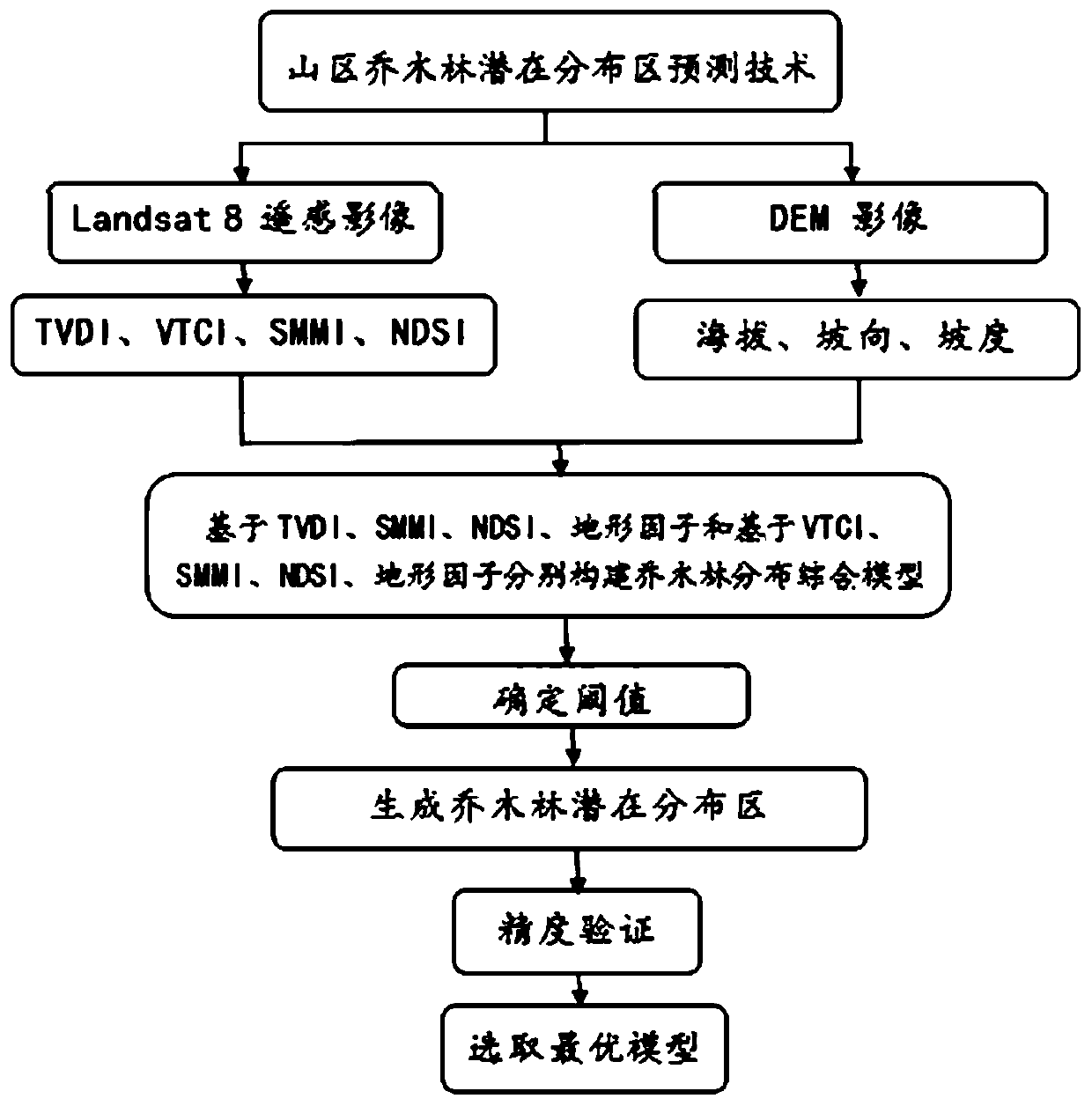Prediction method for potential distribution of arbor forests in mountainous area
A forecasting method and arbor technology, which can be used in instruments, data processing applications, geographic information databases, etc., and can solve problems such as the distribution of meteorological stations with limited forecast accuracy in forest land.
- Summary
- Abstract
- Description
- Claims
- Application Information
AI Technical Summary
Problems solved by technology
Method used
Image
Examples
Embodiment 1
[0020] Embodiment 1: as figure 1 As shown, a method for predicting the potential distribution of arbor forests in mountainous areas includes the following steps: extract TVDI temperature vegetation drought index, VTCI conditional vegetation temperature index, and SMMI soil moisture from remote sensing image data through GIS geographic information system technology and RS remote sensing technology. Monitoring index, NDSI normalized soil index, extracting elevation, aspect, and slope data from DEM data, among which TVDI temperature vegetation drought index, VTCI conditional vegetation temperature index and SMMI soil moisture monitoring index are used as suitable factors for predicting the potential distribution of arbor forests , NDSI normalized soil index, elevation, aspect, and slope as limiting factors; respectively based on TVDI temperature vegetation drought index, SMMI soil moisture monitoring index, limiting factor and based on VTCI conditional vegetation temperature index...
Embodiment 2
[0080] Embodiment 2: as figure 1 As shown, a method for predicting the potential distribution of arbor forests in mountainous areas includes the following steps;
[0081] Step 1. Collect data from the Geospatial Data Cloud website ( http: / / www.gscloud.cn / ) download Landsat 8 Remote sensing image data and DEM image data.
[0082] Step 2, data preprocessing, using ENVI to perform preprocessing such as geometric correction, radiometric calibration, atmospheric correction, and terrain correction on remote sensing images.
[0083] Step 3, extract the temperature vegetation drought index, first use ENVI according to the mathematical model:
[0084]
[0085] Extracting land surface temperature from remote sensing images, T s is the surface temperature of any pixel, is the radiance value of any pixel, the K of Landsat8 1 =774.8853W / (m 2 *sr*μm), K 2 = 1321.0789K.
[0086] Secondly, use ENVI based on the mathematical model:
[0087] NDVI=(NIR-RED) / (NIR+RED) (2)
[0088...
PUM
 Login to View More
Login to View More Abstract
Description
Claims
Application Information
 Login to View More
Login to View More - R&D
- Intellectual Property
- Life Sciences
- Materials
- Tech Scout
- Unparalleled Data Quality
- Higher Quality Content
- 60% Fewer Hallucinations
Browse by: Latest US Patents, China's latest patents, Technical Efficacy Thesaurus, Application Domain, Technology Topic, Popular Technical Reports.
© 2025 PatSnap. All rights reserved.Legal|Privacy policy|Modern Slavery Act Transparency Statement|Sitemap|About US| Contact US: help@patsnap.com



